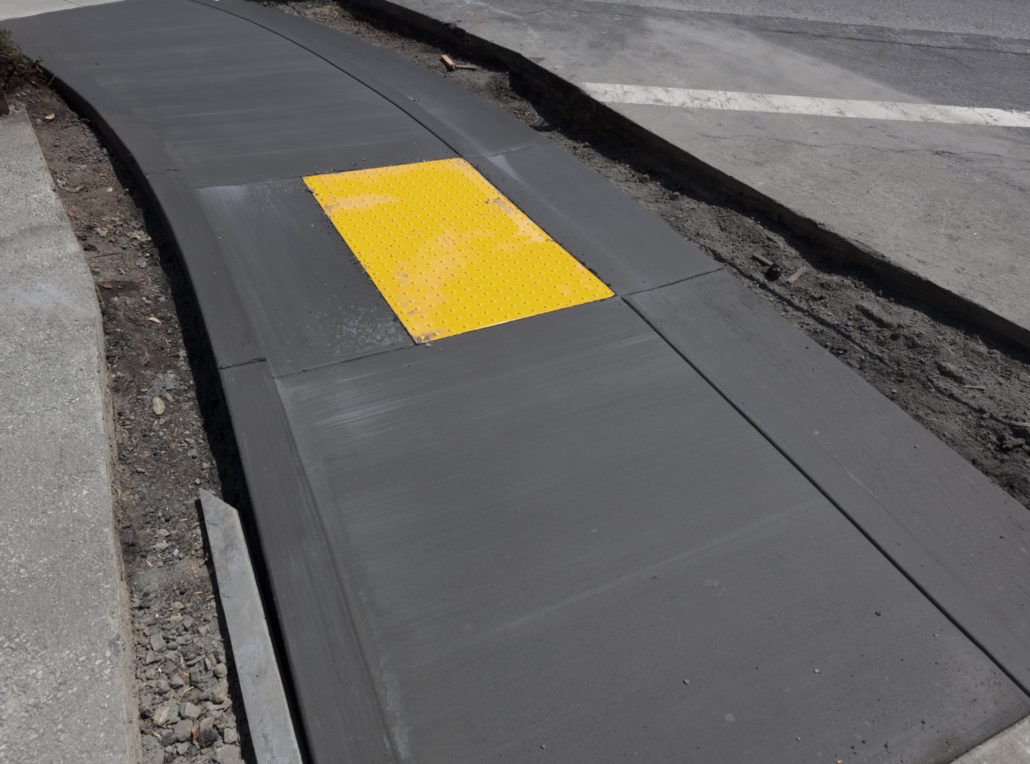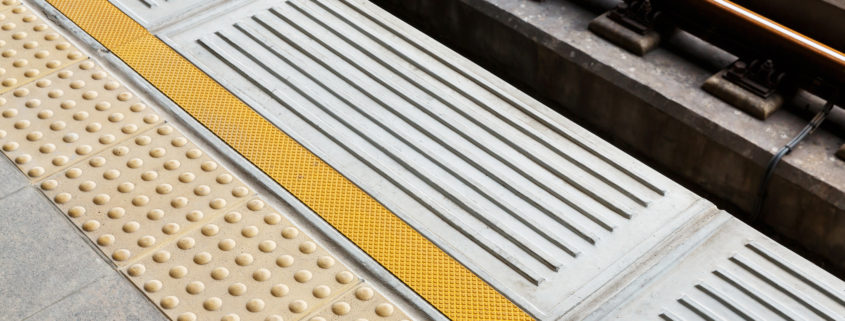Features to Look for in Detectable Warning Surfaces
Whether you have a new construction project or a retrofitting project, selecting the appropriate detectable warning surfaces is important. You need to ensure you are compliant with the current ADA (Americans with Disabilities Act) requirements.1 Since the ADA first went into effect in 1991, there have been several changes, and it is your responsibility to verify the current requirements.
Location Requirements
The ADA requires tactile warning surfaces to be installed on rail and transit platform edges, curb ramps, reflecting pools, and hazardous crosswalks and vehicle ways.
Spacing Requirements
The raised domes on the warning surfaces have to have a minimum of center-to-center spacing of 1.6 inches and no more than a maximum of 2.4 inches. The spacing in between each adjacent raised dome must be a minimum of 0.65 inches.
Size Requirements
The warning surfaces need to consist of a series of tactile domes over a radial, square, or rectangular grid that complies with the ADA requirements. The warning surface must be a minimum of 24 inches long in the direction of travel and extend the entire width on the surface where they are being installed.
Color Requirements
The ADA currently does not have any specific or mandatory color requirements. However, there is a contract requirement. The warning surfaces must contrast with the color of the sidewalk, street, platform, or any other surface where they are installed. The warning surfaces should either be light when installed on dark surfaces or dark when installed on light surfaces.
Even though the ADA does not have any mandatory color requirements, certain states and local municipalities have adopted specific colors. Therefore, it is your responsibility to check state and local laws to verify whether there are any restrictions on color.
Types of Warning Surface Products

Aside from the ADA requirements, you need to also consider the different types that could be used for your project. Each type has its own benefits, depending on the location where it will be installed.
- Cast-in-Place: This type of warning surface is well-suited for retrofitted and new construction projects where fresh concrete is poured. The warning surface is embedded into the fresh concrete and remains in place once the concrete fully sets.
- Cast-in-Place Replaceable: This type of warning surface is similar to cast-in-place warning surface products with one exception. The panels consist of two pieces so they can be replaced and changed easily without having to remove the entire panel embedded into the concrete.
- Surface Applied: This type of warning surface is also suitable for retrofitted and new construction projects. The panels are placed over the top of existing concrete surfaces and can be installed in about ten minutes.
- Radius Systems: This type of warning surface is curved for use around corners and other curved areas where you want a continuous warning surface. The panels can be surface applied, cast-in-place, or cast-in-place replaceable.
The features you should look for in warning surfaces are those that meet current ADA requirements, fulfill any state or local ordinances, and best fit with your project requirements. For assistance in selecting truncated dome surface products, please feel free to contact ADA Solutions at (800) 372-0519 today!
Source








